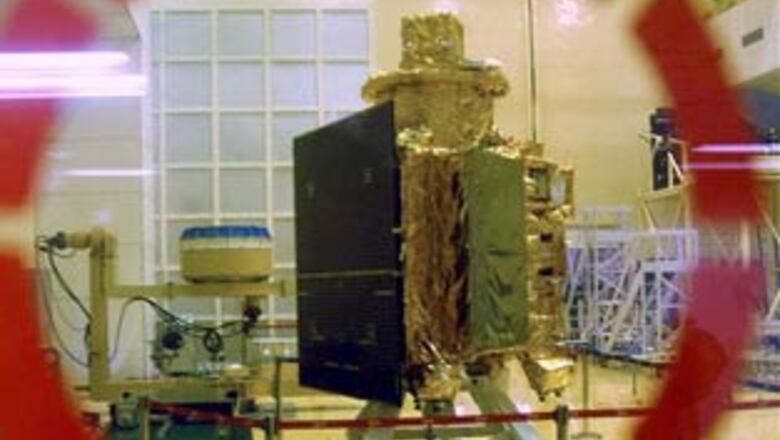
views
Panaji/Bangalore: India's first lunar mission Chandrayaan-1 has been terminated abruptly after repeated attempts to restore radio contact with the spacecraft failed, a top space official said on Sunday.
"We had to terminate the mission as we don't have contact with the spacecraft. Though we are disappointed with what has happened, we have managed to salvage a large volume of data," Indian Space Research Organisation (ISRO) Chairman G Madhavan Nair said.
The space agency's deep space network (DSN) at Byalalu, about 40 km from Bangalore, lost radio contact with the mooncraft early on Saturday while orbiting at 200 km away from the lunar surface.
Repeated attempts to re-establish the communication link with the beleaguered spacecraft from the space agency's telemetry, tracking and command network (Istrac) at Peenya on the outskirts of the city turned futile.
"Our expert team has come to a conclusion that it is not possible to restore the radio link, as the computers onboard the spacecraft for controlling the mission are non-functional for various reasons. Without the computers functioning, the mission cannot proceed," Nair pointed out.
DSN last received data from the lunarcraft at 0025 hours IST on Saturday when it was over the Indian subcontinent region.
The space agency has set up an assessment committee to look into the performance of the mission in totality, including the reasons for malfunctioning of its critical star sensor, antennae and the computers onboard.
"The moon mission was a great success and 95 per cent of its objective was completed. We could collect a large volume of data, including 70,000 images of the moon," Nair added.
The computers on board the craft could have malfunctioned, triggering off the communication failure, he added.
"The power signals which go to the computer systems failed and we had to terminate the mission," Nair said, adding that the spacecraft was orbiting the moon at a distance of about 200 km and it would take nearly 1,000 days for it to hit the moon's surface.
PAGE_BREAK
"We have already initiated discussions with the US and Russia to use their radars to track the orbiting spacecraft," Nair said.
He also said lessons will be learnt from Chandrayaan-I and this failure would not delay the launch of Chandrayaan-II.
"There are some marginal corrections needed," he said, adding that he would be meet Prime Minister Manmohan Singh next week to speak to him about the mission.
Though ISRO has aborted the mission, the 514-kg Chandrayaan will remain in lunar orbit for over a year and crash onto the moon's surface subsequently.
"We will use the radars of Russia and the US to keep a track of the spacecraft in the lunar orbit and its whereabouts," ISRO director S Satish said in Bangalore.
Admitting that the two-year timeframe for the mission was too long and premature, the official said some of the experiments were rescheduled and advanced to ensure the data was collected in the first few months of its expedition.
"None of the lunar missions has been for more than a year. Many of them last six-seven months whereas our mission lasted for about 10 months against heavy odds, including the hostile lunar environment, solar radiation and other variations in the space," Satish asserted.
Unfazed by the dramatic reverses encountered by Chandrayaan, the Indian space community remains upbeat about the achievements of the ambitious mission in an uncharted arena.
"We have achieved the engineering or technology objectives of the mission by flying the spacecraft 400,000 km to the moon, inserting it into the lunar orbit and placing the Indian tricolour on the lunar surface Nov 14 without hitch," Nair noted.
Similarly, the scientific objectives such as the chemical and mineralogical mapping of the lunar surface using sophisticated sensors, conducting high-resolution remote-sensing of the moon in visible, near infrared, low-energy and high energy x-ray regions and three dimensional atlas of the near and far sides of the moon were also accomplished.
"We have received excellent data from all the 11 instruments and the scientific community and the international agencies participating in the mission are very happy with the quality of the data," Satish claimed.


















Comments
0 comment